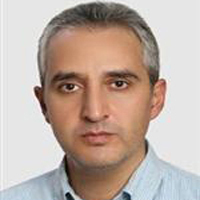INVESTIGATING THE DYNAMIC INTERACTION OF MORNING GLORY SPILLWAY WITH RESERVOIR WATER USING THE COUPLED FINITE ELEMENT-FINITE VOLUME METHOD
In this research, the behavior of the morning glory crest and throat were investigated in the event of flood. Spillway structure and dam reservoir fluid were respectively simulated using the finite element method and finite volume method in ANSYS software. The morning glory structure's behavior was performed in three scenarios: a) the static analysis scenario of the dam empty reservoir, b) the static analysis scenario of the full reservoir while there is no flow over the spillway crest, and c) the dynamic analysis scenario of structure-fluid interaction in two parts: 1- starting of the flood flow on the morning glory spillway, and 2- the steady state flood flow on the morning glory spillway. The concrete structure analysis was linearly done in all three scenarios. Based on the results, the most critical condition for the structure in terms of maximum tensile stress was 5.3 MPa in the first part of the third scenario. The maximum compressive stress was 12.3 MPa in the second part of the third scenario. Spillways are one of the most important and vital structures in the life of a dam. The efficiency and proper functioning of such structures requires a precise and responsible design. The morning glory spillways have a great deal of importance due to the standing structure inside the dam reservoir. The weight and hydrodynamic loading on the body of spillway concrete structure during a flood complicates the interaction analysis of the structure and the fluid. By using numerical methods in computational fluid dynamics and structural analysis, we will be able to predict the behavior of structure and fluid hydrodynamics parameters. In model's fluid domain, choosing the type of Navier---Stokes equations proportional to the efficient RANS mathematical model of turbulence, is very sensitive. Mainly one equation turbulence models such as the Spalart-Allmaras or two-equation models, such as K-Epsilon or K-Omega, are based on Boussinesq hypothesis. Boussinesq hypothesis explains how to estimate the components of the fluid stress tensor for the above-mentioned turbulence equations. This assumption, by simplifying the computation process, only a in some parts of the fluid domain, analyzes the turbulence as anisotropic.
- حق عضویت دریافتی صرف حمایت از نشریات عضو و نگهداری، تکمیل و توسعه مگیران میشود.
- پرداخت حق اشتراک و دانلود مقالات اجازه بازنشر آن در سایر رسانههای چاپی و دیجیتال را به کاربر نمیدهد.




